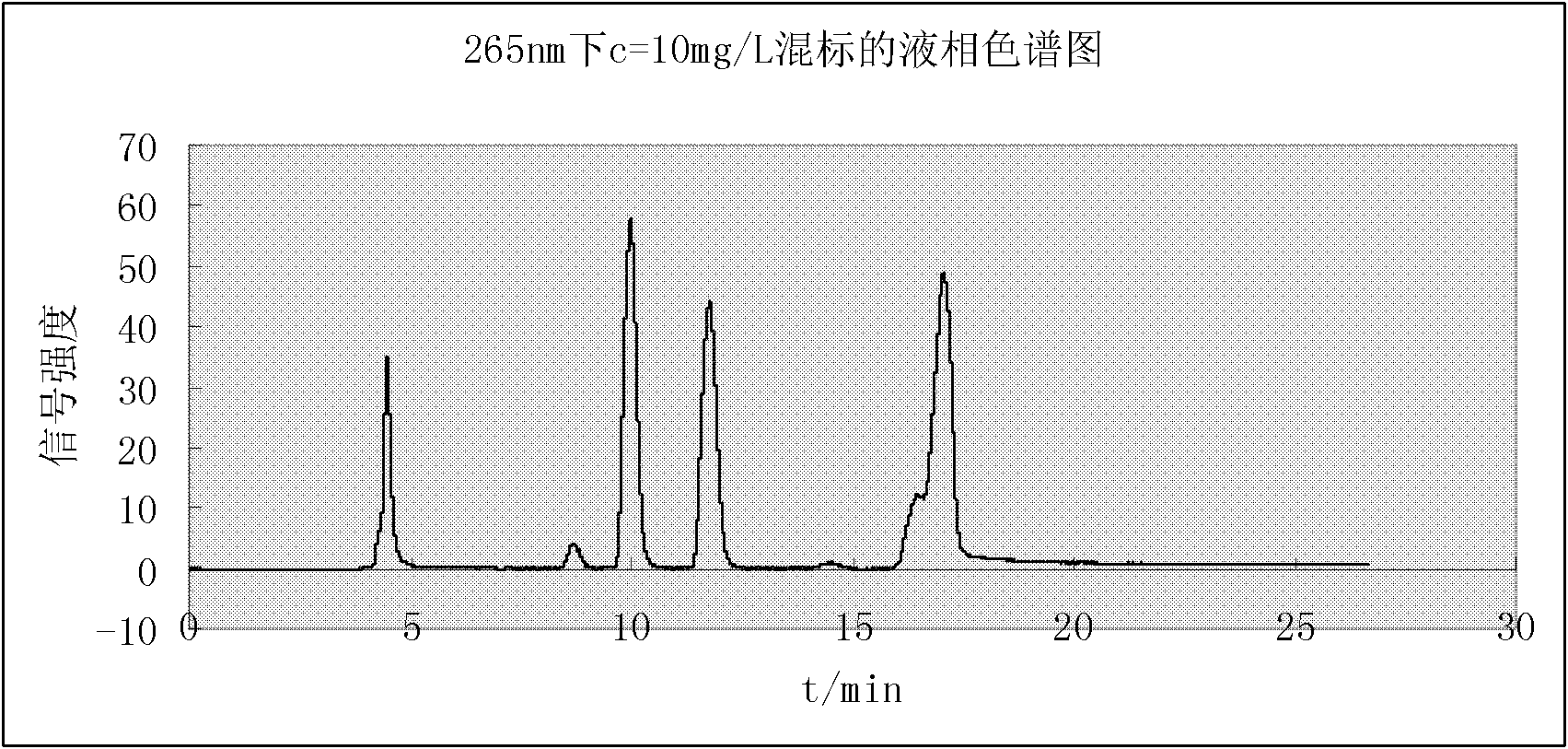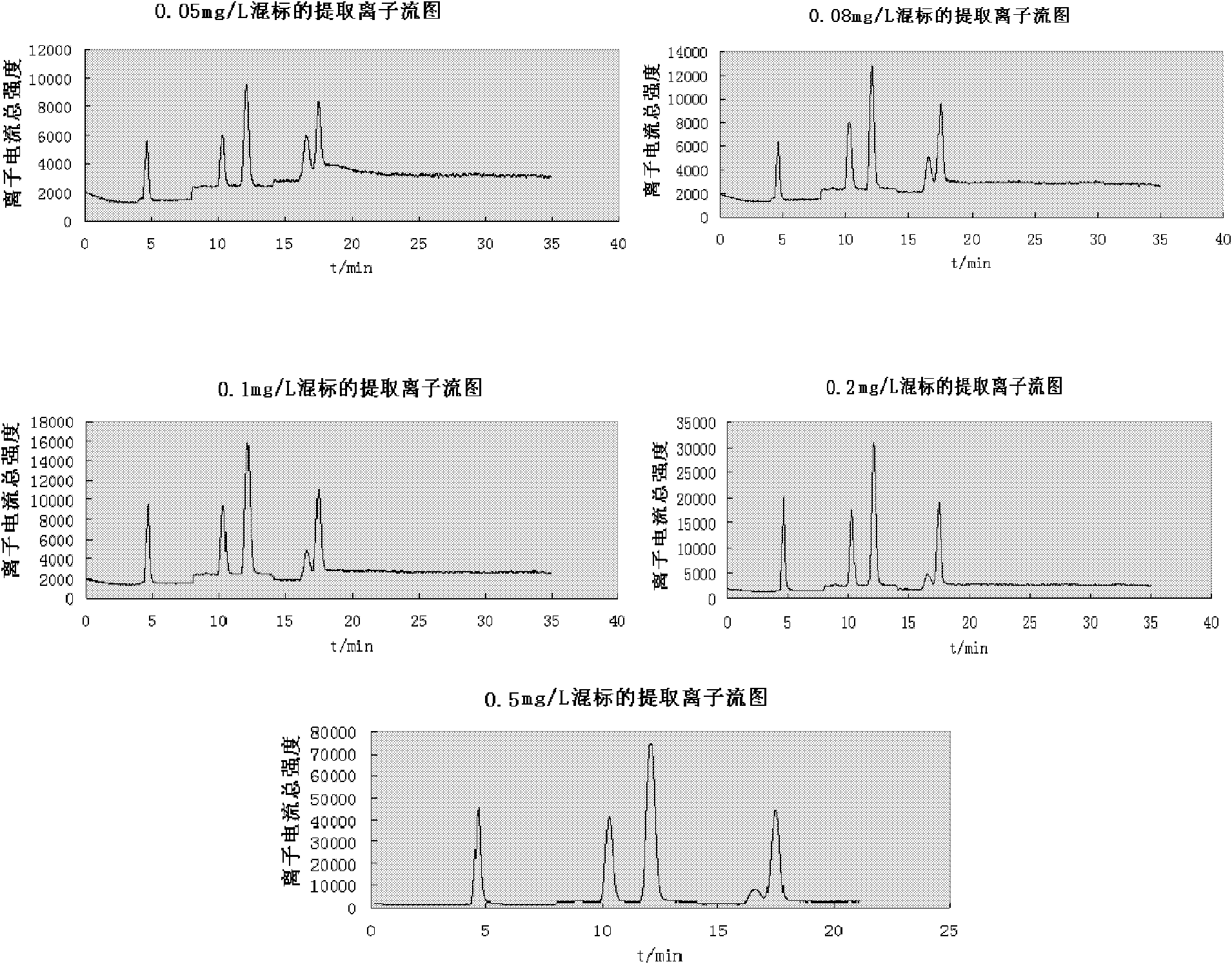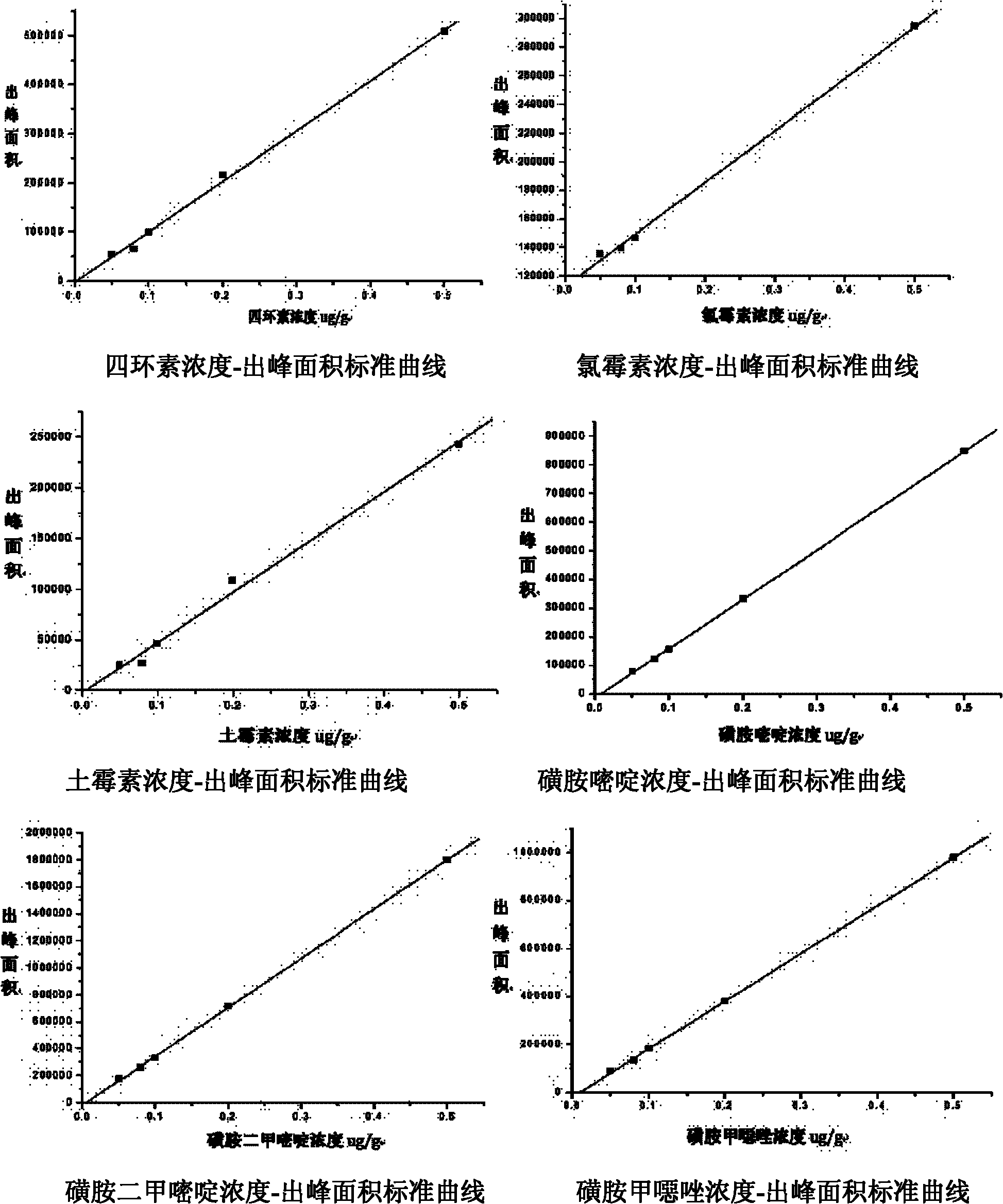Simultaneous Quantitative Determination of Multiple Antibiotics at One Time
A technology for quantitative determination of antibiotics, applied in measuring devices, instruments, scientific instruments, etc., can solve problems such as sensitivity and detection limit, and achieve the effect of overcoming errors, saving time and efficient quantification, and simple steps
- Summary
- Abstract
- Description
- Claims
- Application Information
AI Technical Summary
Problems solved by technology
Method used
Image
Examples
Embodiment 1
[0046] Quantitative determination of antibiotics in stool samples
[0047] (1) Sample pretreatment
[0048] Take 3-5g of feces samples to cover the bottom of the petri dish, put it in a freeze dryer overnight and grind it to a particle size of 0.30mm, take 1g and extract it with 10ml of acetonitrile acidified with citric acid buffer to pH=4.7, and put it in a vortex machine Mix well, sonicate at 25°C for 15 minutes, centrifuge at 4000r / min for 15 minutes, repeat the extraction twice, collect the supernatant and filter it through a glass fiber membrane. The supernatant was extracted twice with 10 mL of n-hexane, and the extract was evaporated to near dryness with a rotary evaporator, diluted with double distilled water, and filtered through a glass fiber membrane. The extract passes through the PEP solid-phase extraction column activated by 5mL methanol and 5mL water in advance at a speed of 1 drop / s. 95 solution, and all the effluent was discarded. It was dried under reduce...
Embodiment 2
[0055] Quantitative determination of antibiotics in soil / sediment samples
[0056] (1) Sample pretreatment
[0057] Take 3-5g of the sample and spread it on the bottom of the culture dish, put it in a freeze dryer overnight and grind it to a particle size of 0.30mm, take 1g and add 20mL of EDTA-McIlvaine buffer solution, shake for 30min, take the upper layer extract, and extract repeatedly After 3 times, the 3 times of extracts were combined and filtered with a glass fiber membrane. The extract passes through the PEP solid-phase extraction column activated by 5mL methanol and 5mL water in advance at a speed of 1 drop / s. 95 solution, and all the effluent was discarded. It was pumped to dryness under reduced pressure for 3 min, and finally eluted with 8 mL of V (methanol): V (ethyl acetate) = 10:90 solution. The eluent was blown with nitrogen at 45°C, concentrated to dryness, and the standard solution obtained by mixing 0.4mL methanol and 0.6mL deionized water was used to dis...
Embodiment 3
[0064] Quantitative Determination of Antibiotics in Water Samples
[0065] (1) Sample pretreatment
[0066] The water sample is removed with a 0.45μm filter membrane to remove suspended matter, and 0.5mg Na is added to 1L of water sample 2 EDTA, and hydrochloric acid was added to adjust the pH to about 3.0. The extract passes through the PEP solid-phase extraction column activated by 5mL methanol and 5mL water in advance at a speed of 1 drop / s. 95 solution, and all the effluent was discarded. Dry it under reduced pressure for 5 min, and finally elute with 10 mL of V (methanol): V (ethyl acetate) = 10:90 solution. The eluate was blown with nitrogen at 40°C, concentrated to dryness, dissolved the residue with a standard solution obtained by mixing 0.4mL methanol and 0.6mL deionized water, and passed through a 0.45μm filter membrane to obtain a sample filtrate for liquid chromatography instrument measurement.
[0067] (2) HPLC-MS analysis
[0068] According to the ion chrom...
PUM
| Property | Measurement | Unit |
|---|---|---|
| Concentration | aaaaa | aaaaa |
| Concentration | aaaaa | aaaaa |
Abstract
Description
Claims
Application Information
 Login to View More
Login to View More - R&D
- Intellectual Property
- Life Sciences
- Materials
- Tech Scout
- Unparalleled Data Quality
- Higher Quality Content
- 60% Fewer Hallucinations
Browse by: Latest US Patents, China's latest patents, Technical Efficacy Thesaurus, Application Domain, Technology Topic, Popular Technical Reports.
© 2025 PatSnap. All rights reserved.Legal|Privacy policy|Modern Slavery Act Transparency Statement|Sitemap|About US| Contact US: help@patsnap.com



